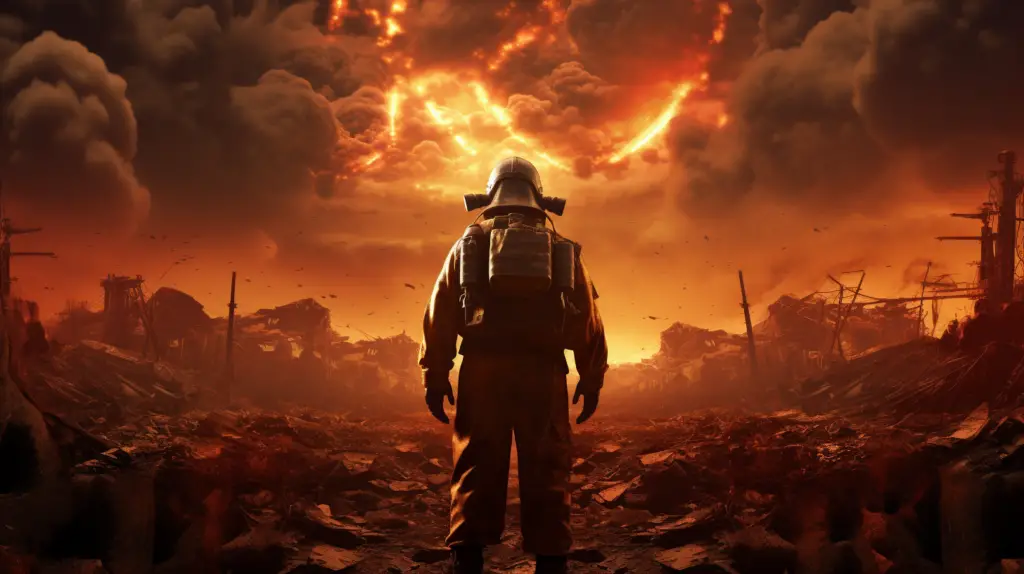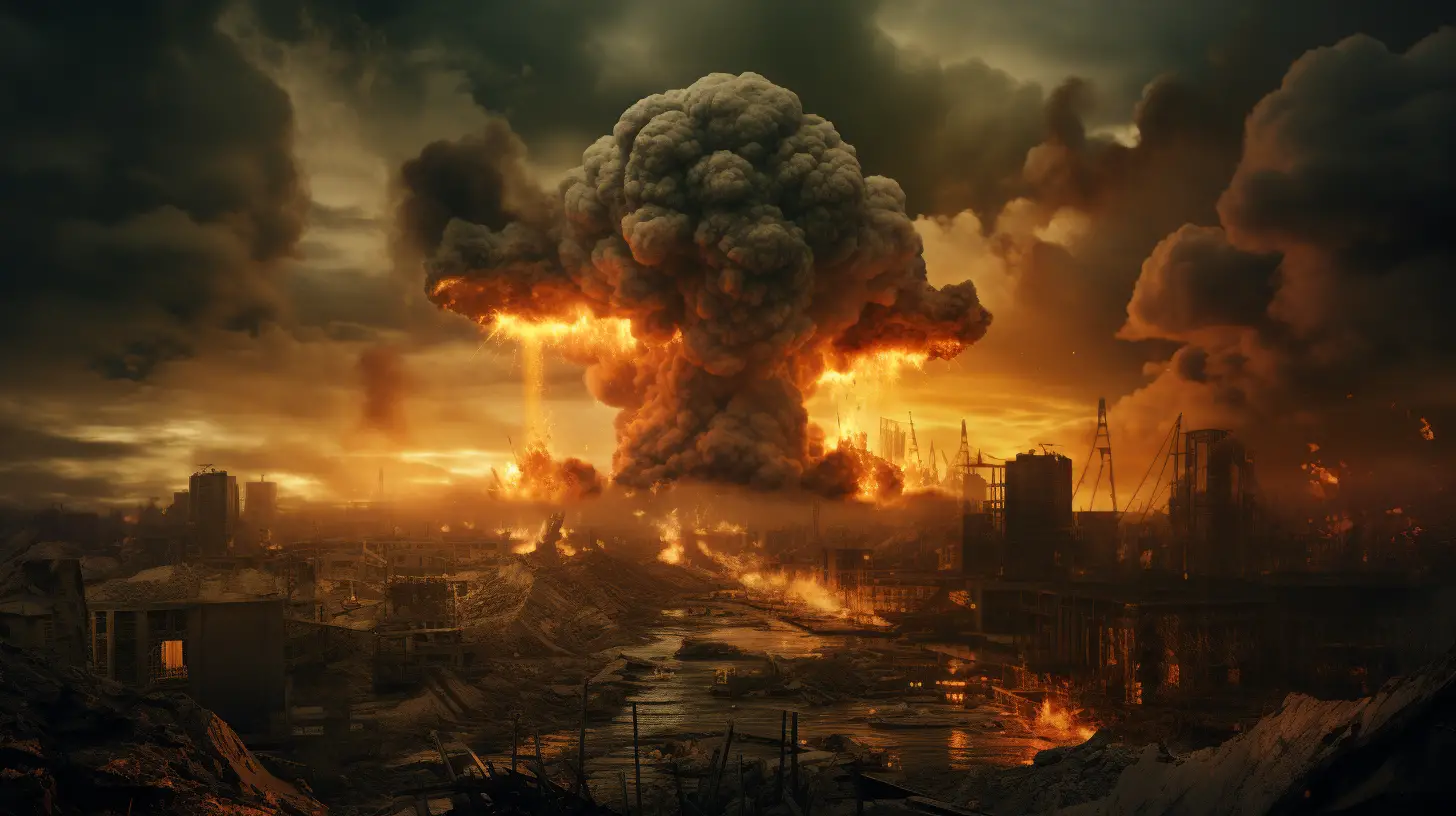The Atomic Age, also know as the Nuclear Age, a period marked by significant advancements in nuclear technology, is a fascinating era of human history. It was an epoch that witnessed a multitude of technological, social, political, and environmental changes that continue to impact our world today. From the chilling fear of nuclear war to the transformative potential of nuclear energy, the Atomic Age has a wealth of captivating stories and facts to unravel. With its roots embedded deep within the 20th century, it is an era that set the stage for scientific developments, transformed the way nations interacted, and shaped modern human consciousness.

Here are 25 interesting facts about the Atomic Age, each showcasing the rich complexity and paradoxes of this remarkable era.
- The Atomic Age began on December 2, 1942, with the initiation of the first controlled nuclear chain reaction under the University of Chicago’s Stagg Field. This groundbreaking experiment was led by physicist Enrico Fermi.
- The first nuclear weapon, infamously known as “Little Boy,” was dropped on Hiroshima, Japan, by the United States on August 6, 1945. Three days later, another bomb named “Fat Man” was detonated over Nagasaki.
- The bombings of Hiroshima and Nagasaki resulted in approximately 200,000 casualties, marking the devastating and catastrophic power of nuclear weapons.
- The first nuclear power plant was constructed in 1951 at the Experimental Breeder Reactor I (EBR-I) site in Idaho, United States.
- Atoms for Peace, a program launched by U.S. President Dwight D. Eisenhower in 1953, promoted the use of nuclear energy for peaceful purposes worldwide.
- The Atomic Age led to the formation of the International Atomic Energy Agency (IAEA) in 1957, an organization designed to promote the peaceful use of nuclear energy and inhibit its use for military purposes.
- The Cuban Missile Crisis of 1962 marked the closest point the world has come to a full-scale nuclear war. The standoff lasted 13 days between the United States and the Soviet Union.
- The 1986 Chernobyl disaster in Ukraine, then part of the Soviet Union, is considered the worst nuclear power plant accident in history.
- The Atomic Age saw the development of nuclear medicine, enabling the diagnosis and treatment of diseases such as cancer with radioactive substances.
- The era also gave rise to the concept of Mutually Assured Destruction (MAD), a doctrine stating that the use of nuclear weapons by two opposing sides would result in the complete annihilation of both the attacker and the defender.
READ MORE: 25 Interesting Facts About the Concept of “Nuclear Deterrence” - The Nuclear Non-Proliferation Treaty (NPT) came into effect in 1970. It was an agreement between nations to prevent the spread of nuclear weapons and weapons technology.
- Atomic clocks, another development of the Atomic Age, are the most accurate timekeeping devices in existence, losing or gaining less than a second every few billion years.
- In 1954, the U.S. launched the world’s first nuclear-powered submarine, the USS Nautilus.
- Atomic gardens, which used radiation to induce mutation in plants in the hope of developing beneficial traits, became a trend in the mid-20th century.
- Atomic Age architecture, or Googie architecture, characterized by upswept roofs, bold angles, and futuristic designs, became popular during this period.
- The bikini swimsuit, named after the Bikini Atoll where the U.S. conducted nuclear testing, was introduced in 1946.
- The Atomic Energy Commission was established in 1946 in the U.S. to oversee the peacetime development of atomic science and technology.
- The hydrogen bomb, also known as the H-bomb, which is more powerful than an atomic bomb, was first tested by the U.S. in 1952.
- The term “ground zero,” often associated with the 9/11 attacks, originated from the Atomic Age to denote the point directly below or above a nuclear detonation.
- The Three Mile Island accident in 1979 was the most serious nuclear accident in U.S. history.
READ MORE: 25 Interesting Facts About the “Nuclear Winter” Theory - The 2011 Fukushima Daiichi nuclear disaster in Japan rekindled global awareness about the potential hazards of nuclear power plants.
- A significant cultural impact of the Atomic Age was the emergence of a new genre of film – the atomic monster movie, epitomized by movies like “Godzilla” and “Them!”
- The idea of a doomsday clock was introduced by the Bulletin of the Atomic Scientists in 1947 as a metaphor for threats to humanity from unchecked scientific and technical advances.
- The Greenpeace environmental movement, established in 1971, was initially focused on nuclear testing and nuclear power.
- Despite the tragedies and risks associated with the Atomic Age, nuclear power still remains a significant global energy source, producing over 10% of the world’s electricity as of 2021.
READ MORE: 25 Interesting Facts About “Hibakusha”: Survivors of the Atomic Bombings
The Atomic Age, an era of profound transformation, brought forth a wave of rapid technological progress, as well as new challenges and risks. Its legacy extends beyond the realms of science and technology, influencing culture, geopolitics, and environmental consciousness. It continues to shape our present and will undoubtedly impact our future. As we ponder these fascinating facts, we gain a deeper understanding of the pivotal role the Atomic Age has played in shaping the world we live in today.


